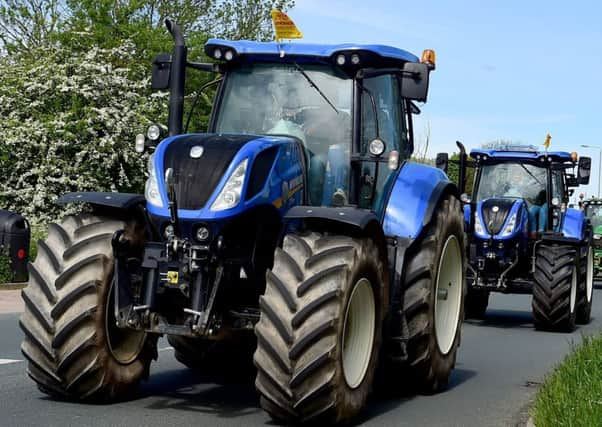Vehicle design can aid rural crime battle


The Agricultural Engineers Association said that serious thought is being given by manufacturers of tractors and other heavy machinery about how their vehicles can become more easily identified when stolen, or even harder to steal in the first place.
Agricultural economist, Stephen Howarth, speaking to The Yorkshire Post on behalf of the trade association, said the best that the farming industry can hope for is to stay a few steps ahead of criminals through machinery innovations.
Advertisement
Hide AdAdvertisement
Hide AdHe said that the vehicle identification system, Cesar, had made a huge difference since it was first introduced to agricultural equipment nine years ago.
The system involves the unique marking of individual machines, including micro-dots being marked onto tractors and combine harvesters to make it is easier for police to identify stolen items.
Asked how seriously manufacturers are scrutinising the design of farm machinery with rural crime in mind, Mr Howarth said: “It is an area that people are looking at. There are various systems in place. Perhaps the most effective is Cesar. It’s very difficult for criminals to remove all trace of.
“It is particularly effective in terms of recoveries. It’s a system that a lot of manufacturers, particularly those who make tractors and combines and other agricultural machinery, are fitting now as standard.”
Advertisement
Hide AdAdvertisement
Hide AdThe system involves a triangular symbol being fitted onto a couple of places on a piece of machinery, while a 100 or more micro-dots are incorporated randomly on each machine, making the markings difficult to locate and remove.
A machine can be used to read the markings and identify the vehicle if it was registered on a central database at the point of sale.
“It’s quite an effective deterrent,” Mr Howarth said. “Theft rates have been found to be much lower and recovery rates higher.
“It means these machines can be tracked almost anywhere in the world. We are tending to find that system to be more effective than trackers because they are so difficult to remove.”
Advertisement
Hide AdAdvertisement
Hide AdMany farm machines are now fitted with GPS trackers but Mr Howarth said some criminals had found ways of blocking their signal or removing the devices entirely, which leaves police with a narrow window of opportunity to recover those machines.
“GPS trackers are quite useful in terms of more casual thefts like quad bikes for example and more opportunistic thefts but quite a lot of theft of larger machinery is stolen to order by organised crime groups who are shipping them out of the country and selling them on to somewhere else.
“These operations are sophisticated enough that they will know the protection that is on there,” Mr Howarth said.
A challenge with lower value machines is that the Cesar system adds to their cost. This means it is not as prevalent on quad bikes and smaller construction machinery.
Advertisement
Hide AdAdvertisement
Hide AdMr Howarth said: “The best we can hope for is to stay a few steps ahead of the criminals. It’s something that is definitely on the minds of manufacturers to be doing that and it is one of a number of areas that they will be looking to improve.”